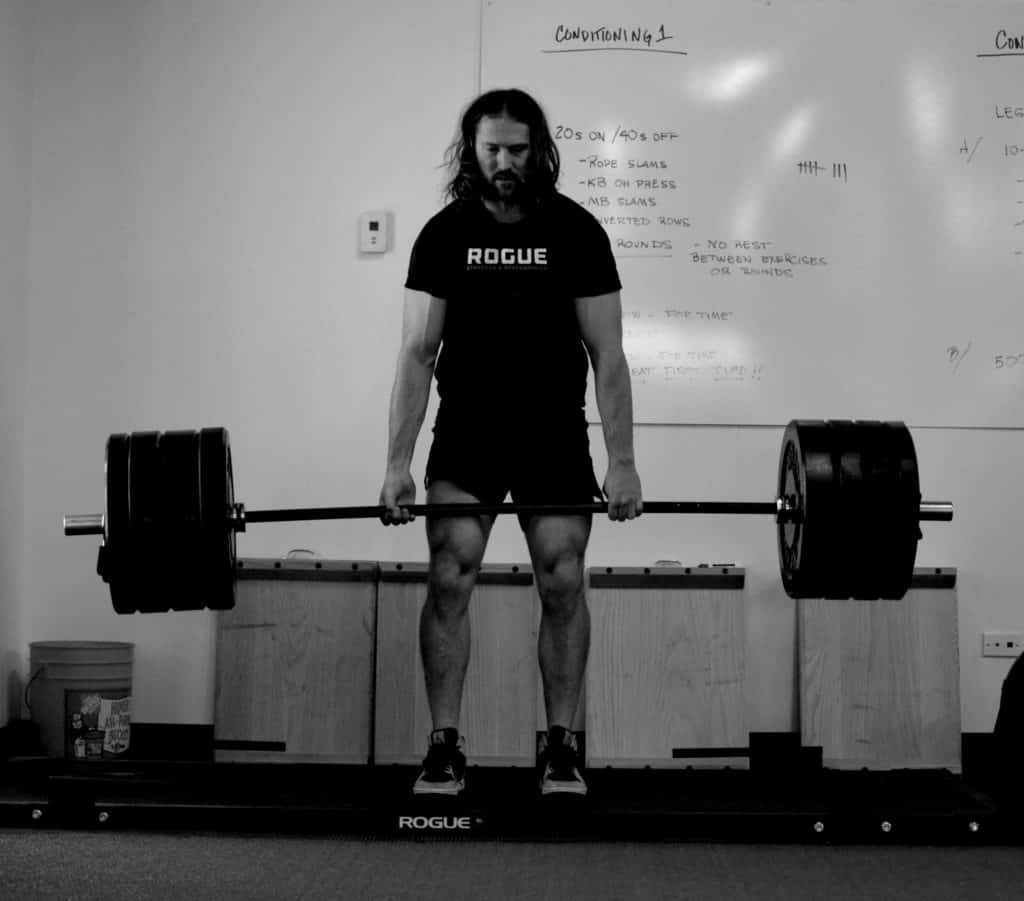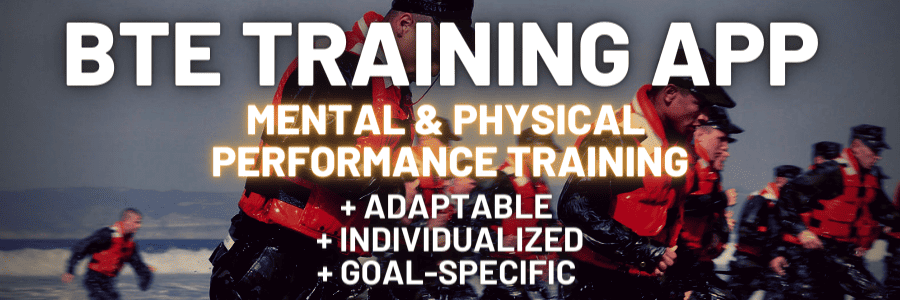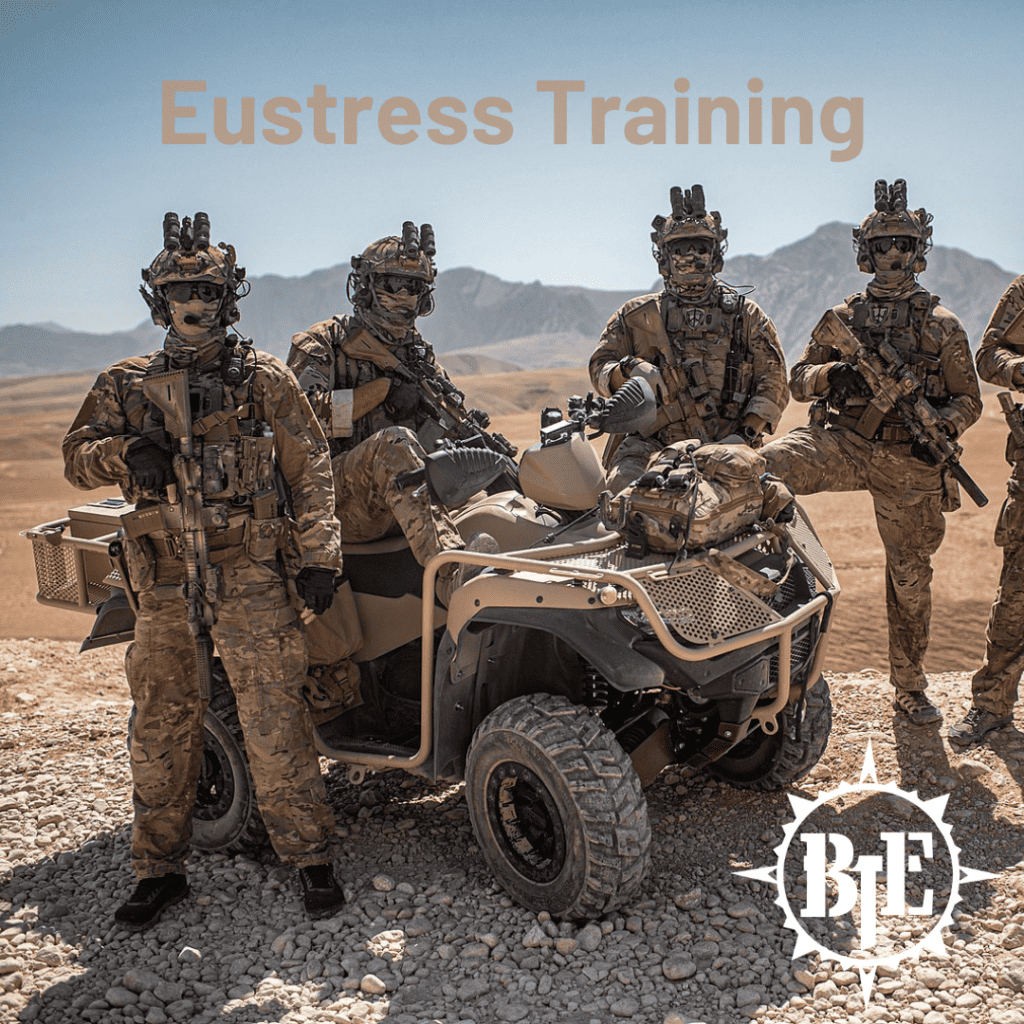By: Jon Pope
‘How many more sets?’ I complained.
‘It doesn’t matter, you’re up’ came the voice to my right.
Fuck. This is awful. It was approaching 100 degrees IN THE GYM. Hotter inside than outside.
Who in the hell had the great idea to paint this metal building black? I thought this to myself as I crawled under the bar for another round of box squats. The fifth, or sixth, or maybe it was the seventh set? Who knows, I had stopped counting.
‘Next up, change the weights’ the voice said as I racked the weight.
This was week two of training with Craig Weller. The first workout had culminated in me lying next to a pile of my puke after we did a ‘light’ finisher consisting of a 500m row for time. Not for fitness, but to keep the mind sharp and to see if I’d actually put in the work. Apparently, I passed, because I was invited back.
This wasn’t the first or last lesson I’d have in getting to know my stress response while training with Craig. I was used to pre-workout, intra workout protein / carb shakes, heavy metal of my choice, and an A/C’d globo gym with drinking fountains delivering cold, refreshing water whenever I was thirsty.
In Craig’s world, none of this mattered. Well, the heavy metal did, but none of the other things. All of that was just decoration that distracted from the task at hand: lifting heavy things over and over, as quickly as possible, with perfect technique, often with no set end point.
During the workout no one complained, talked shit, yelled or screamed. You couldn’t afford to waste that energy. They just calmly got under the bar set after set after set until despite their best efforts, the bar slowed down or technique slipped. Then we moved on.
After a few weeks I adapted to the process and weights that previously were a grind started flying up. A month in, I could handle two-a-days without feeling as worked as I had after one workout. The 100-degree-death-box workouts (what I called the gym), weren’t a big deal – I actually looked forward to them. There was a method to the madness and I needed to learn more.

The Stress Response: Predictability and Control
A decade later Craig and I still use the principles outlined in this article with all of our clients; whether they are eighteen and training for a special operations selection course or are sixty and looking to improve their quality of life. This is not just another method, but a different way of thinking about training altogether.
When most people think of their stress response they imagine it just happens and they have no control over it. That’s a grave error.
The degree and type of stress response your brain activates is variable and controllable over time (in most situations). This is what I learned in the death box by mirroring Craig. Now I know that a litany of research in many different fields shows that those who display command over their stress response perform better, and learn and recover faster.
To be clear, the stress response is only partially under our control. However, the control that we do have is extremely important to how we perform in challenging situations. Two factors that greatly influence how we respond are predictability and control.
- Predictability is knowing what is about to happen; what the experience will feel like physically, emotionally, and psychologically and what you can do to deal with the situation. The more predictable something is, the less we feel stressed about it.
- Control is the ability to influence the outcome of a situation. When you know you can influence what happens within an experience, you feel less stressed.
Both of these factors influence each other. For example, if you know what is going to happen (predictable) you tend to understand how much control you’ll have in the outcome and what to worry about and what isn’t worth your energy.
Eustress vs Distress
This brings us to the second point: the type of stress response you have based on your ability to regulate your perceived predictability and control changes your hormonal response.
If you perceive that you know what’s happening and you have the resources necessary to deal with the situation, you’ll see it as a challenge – something that will require focused effort but something you can cope with and overcome. Another word for this is eustress, or a positive stressor. In more recent research, it’s also been called a challenge-based response (vs. a threat-based response).
If you’re thrown into a situation which is unpredictable and does not give you a sense of control, your body goes into full-on fear mode. You perceive the situation to be threatening because you’re not sure if you’re going to be able to deal with it effectively. This can be called distress, or in more recent research, it’s referred to as a ‘threat’ based stress response.
A eustress based stress response is predominantly comprised of norepinephrine, as opposed to higher levels of adrenaline and cortisol that accompanies a distress response. This isn’t a subtle shift. Distress responses take considerably longer to recover from and largely shut down learning.
Here is another way to think about the difference:
Eustress is the response you want when learning and raising the floor of what you’re capable of. Distress is the response you’ll want to use when performing.
What is Eustress Training?
What Craig had learned through his time in special operations is the power of managing the stress response. He had intuitively applied this to traditional strength training when he returned to civilian life. Over time, we expanded the repertoire of eustress training methods.
Eustress training is a way of training your body to do more work, easily by raising the baseline of movement or exercise that you can do without stressing your body out or making a significant demand on your recovery capacity.
This means that you can eventually train harder, recover faster, and when you want to really push things in the gym or in your sport, you have a higher output potential. Since you’ve trained to make heavy workouts feel easy, you’ll be able to do even more before it feels really difficult.
These workouts are often a way to get a lot of volume at a relatively heavy weight without putting excessive stress on the body. For this reason, we tend to use these methods during volume building training blocks.
Eustress training also has the following benefits:
- Designed to build a high degree of control into your perception of sustained effort, teaching you how to make hard things easy.
- Allows you to refine and dial in technique and mental strategies.
- Reduces recovery time – allowing you to shift emphasis to other physiological demands (increasing overall fitness).
- Increases specific work capacity in the movements trained.
Eustress Training Methods
Guidelines for all Eustress Training Methods:
- Heart rate must drop below 130 between sets.
- Heart rate should stay below about 150 bpm throughout the workout.
- Focus on consciously controlling mental/emotional perspective and trying to stay calm and relaxed during workouts (more on this here).
- Breathe in and out of the nose when not performing an exercise.
- No breakdown in technique or grinding is allowed.
- Small adjustments up and down in weight from set to set or across a workout is OK and recommended.
- Rest only as much as needed to maintain all guidelines above.
It’s important for these workouts to go fast and to work as continuously as possible. This means that you have to self-regulate the pace and intensity of your training. You shouldn’t have time to wander around between sets. If you’re deadlifting, stay at the bar, monitor your recovery and perception of effort, and pull reps as frequently as you can while staying within the constraints.
Rep sets: 20-50 reps done in sets of 1-3 reps at a time. Start with 50-60% of your 1-rep-max (based on a lift you’ve done within the past 2-3 months) and work up to 80-90% over 6-8 weeks. Stay on a single movement until all reps are completed. Even 50-rep sets should take no more than 15 minutes.
Example template:
- Week 1: 30 reps
- Week 2: 40 reps
- Week 3: 50 reps
- Week 4: 20 reps
Timed sets: 5-15 minutes in length. Same guidelines as described above but time is the primary variable being adjusted. Weight can vary week to week as long as the guidelines are respected. You’re doing as many reps as you can within the timeframe while following the constraints above (HR and breath control, technical quality, etc).
Example template:
- Week 1: 9 minutes
- Week 2: 12 minutes
- Week 3: 15 minutes
- Week 4: 7 minutes
Breathing sets: This method is a great way to break up higher rep sets. Same guidelines as above.
- 5-3-2: 5 reps, 3 breaths, 3 reps, 3 breaths, 2 reps. Don’t rack the weight in between breaths. If deadlifting, set the load down.
- 3-2-1: 3 reps, 3 breaths, 2 reps, 3 breaths, 1 rep. Same principles as above.
Example template 1:
- Week 1: 3×5-3-2
- Week 2: 4×5-3-2
- Week 3: 5×5-3-2
- Week 4: 3×6
Example template 2:
- Week 1: 6×3-2-1
- Week 2: 7×3-2-1
- Week 3: 8×3-2-1
- Week 4: 5×3
Open-ended sets: A weight or weight range is chosen and sets of 1-3 reps are performed until technique breaks down or bar speed slows. This is the hardest and most advanced form of eustress training and should only be done by someone comfortable with the other methods. No cap is put on total volume.
We have used this strategy to do over 100 reps in 15 minutes with non-trivial loads (1.5x bodyweight deadlifts or squats).
Wrap Up
The principles that govern eustress training methods are used in all of our introductory programs with clients. We do so to help them to first gain awareness of their stress response and eventually the ability to control it during training. This comes in handy when introducing more intensive phases where managing stress becomes more challenging. Our book covers Eustress training principles and applications in further detail.

Want to learn more? Download a free chapter from our book, Building the Elite:



Jon endures a grueling Distress workout then the article highlights how Eustress workouts can more effectively build a higher baseline level of fitness. Though Eustress should be the go-to training style for longevity purposes, do you also recommend mixing in Distress style workouts to push an operator’s mental capacity for heat/cold, minimal food or water, extra long workouts, etc.?
The point of the story was to highlight that external stimuli (temperature, weight, work density) doesn’t control the type of response you have. Craig was doing the same workout without a strong stress response which highlighted that I wasn’t managing myself effectively. By paying attention, I learned that I could change my experience by focusing on what I could control. Over time that meant that training in similar conditions didn’t lead to the same stress response. That’s the point of eustress training – to make hard things easier. By doing so you can raise your tolerance for objectively difficult conditions without having a strong stress response.
You can read more about when and how to increase difficulty here: https://www.buildingtheelite.com/stress-performance/
Pingback: Eustress Training: Keep Your Head and Kick More Ass
In a periodized program, I get the feeling this method would be more suited for a general prep phase and then maybe added as a “sprinkle” in the specific prep phase for maintenance?
Yes, that is correct. We generally we use it as a higher volume block in general prep phases. And, as you mentioned, we do use it during specific-prep phases as a ‘back off’ block after a high intensity / low volume block.
It’s also very useful as an ‘in-season’ method when work volume & intensity is high. Eustress training is high enough in intensity to maintain top end output, but generally ‘feels’ easy enough to not be mentally stressful when the volume is kept fairly low. More importantly, eustress work helps reinforce controlling the stress response – particularly focusing on relaxing / reducing sympathetic tone – a skill that tends to slowly fade during high intensity work-ups when you’re going hard all day / day-after-day. We usually pair eustress training with self-limiting and movement restorative exercises during ‘in-season’ blocks (rack hold squats on angle board, front foot elevated split squat, knee blocked reverse lunges, etc).